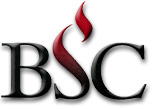Many of the course materials that I use in lecture can be found here. This page also contains the comprehensive listing of course objectives that you will be expected to master in order to recieve a passing grade. I will also post a number of the handouts that I have passed out in lecture. Finally take a look at the Study Advice Guide. There are some very useful suggestions there that are applicable not only this course, but to all your college courses.
To view some of the molecules
and graphics, you may need to download MDL Chime plug-in. The plug-in allows
you to rotate and manipulate 3-d models of molecules and other objects. Most
importantly its FREE! Click
HERE to download the plug-in.
Handouts
VSEPR Handout
A summary of all the important shapes and geometries predicted by valence shell electron pair repulsion theory.Complex Ions
A list of names for important complex anions and cations. Students will be required to know the names for all ion listed. These are also excellent practice for Lewis structures and VSEPR theory.
Isomerism of Coordination Complexes:
A brief summary of potential isomers that exist for coordination complexes The summary includes examples and interactive models.Those Beloved d-Orbitals
A brief summary of the shape and orientation of the all important d-orbitalsDetermination of Rate Laws
A summary of the strategies that can be used to determine the rate law for a given reaction are given. The flow chart that was presented in class can be found here in all its full color gloryNomenclature
A brief summary outlining how to name simple compounds.Complex Ions
A list of names for important complex anions and cations. Students will be required to know the names for all ion listed. These are also excellent practice for Lewis structures and VSEPR theory.Lewis Structures
A step-by-step guide to drawing Lewis Structures and assigning formal charges.Water
A brief summary outlining some properties of water. The page includes structures of water and ice.Solubility Rules
A brief summary outlining the rules for predicting the water solubility of a number of ionic salts. These rules can be used for predicting precipitation reactionsSolids and IMF's
A brief summary outlining the classification of solids and the determination of intermolecular forces.Schematic Drawing of Solid Types
A set of schematic representations of the four classifications solids/materials and the primary attractive forces that hold those solids togetherExamples of Network Solids
A summary of network solids that you will be responsible for identifying. The page contains the interactive models that were shown in class.Examples of Molecular Solids
Several examples of molecular solids with interactive models for visualization. You should be able to identify the imf's present for each molecule.Hydrogen Bonding
A brief summary describing hydrogen bondsVSEPR Summary
A brief summary that describes how to use VSEPR theory to predict molecular geometriesPeriodic Trends
A brief summary that illustrates trends in radius, ionization enrgy, electron affinity and electronegativeCubic Lattices
A brief summary of the three types of cubic lattices and how they are formedCatalase
The structure of the catalase enzyme from beef liver..
| Bridgewater Homepage | Chemistry Homepage | Search Bridgewater | Search Chemistry Pages |
